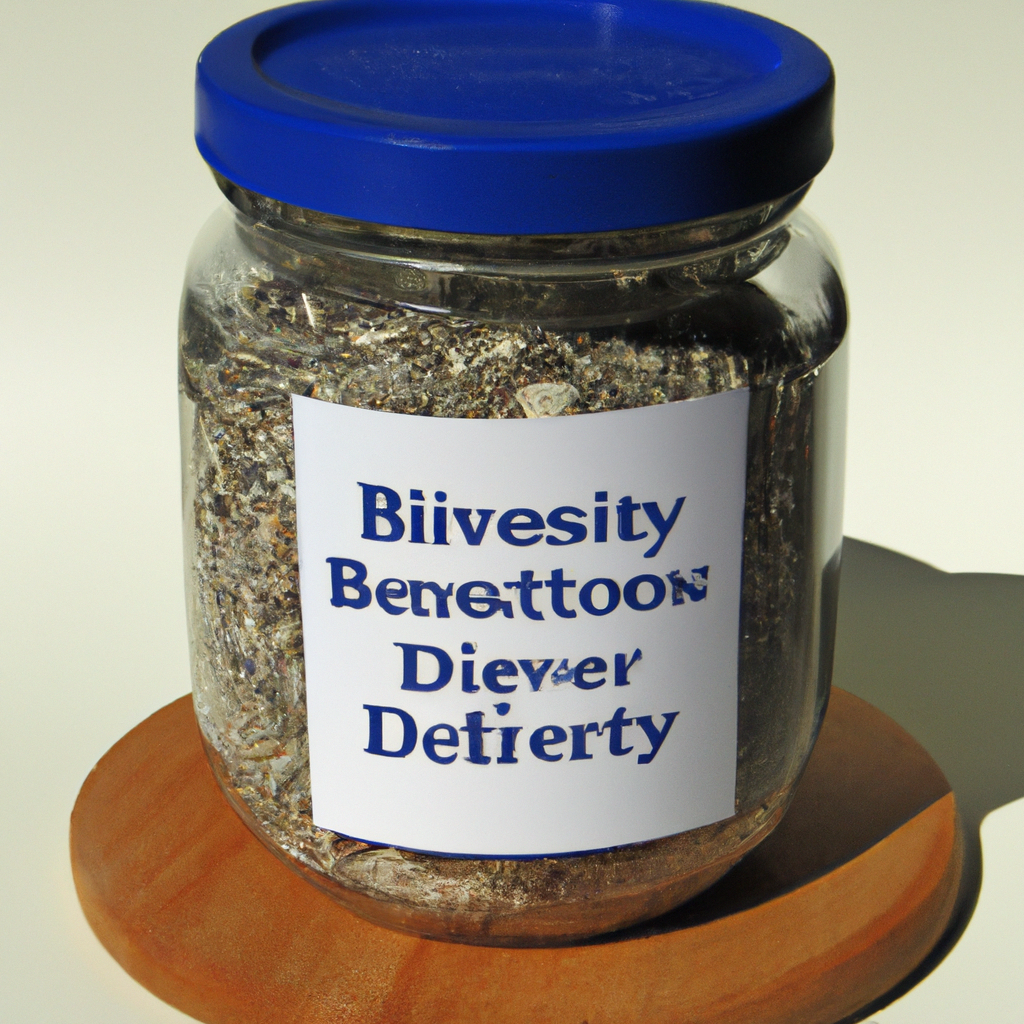The natural world is an incredible complex network of living things that rely on each other for their livelihood, making it essential that it is protected and preserved. Biodiversity conservation is the process of protecting and conserving ecosystems, species, and habitats in order to protect the Earth’s invaluable biological diversity. By protecting these vital parts of our environment, we can combat the effects of climate change, improve the quality of the air and water, and even safeguard our own futures. This article will dive into the importance of biodiversity conservation and how we can use it to protect our ecosystems.
1. Nurturing Life’s Tapestry: The Significance of Biodiversity Conservation
Protecting biodiversity has been of increasingly pressure to conservationists and governments alike. Our environment is a finely interwoven pattern of life – it is up to us to preserve its patchwork.
From the smallest microorganisms to the greatest of mammals, the world is an interconnected network. Each part of this network – each life form – is essential for ecosystem balance. When species are threatened, theirbiodiversity is compromised, and the balance of life shifts.
Here are some of the current challenges that face biodiversity conservation on a global scale:
- Habitat Destruction. Human activity has seen vast areas of land subject to deforestation, land clearing, and the rerouting of waterways. This can have immense ripple effects on the species of that region and eventually leads to the displacement or destruction of biodiversity.
- Climate Change. With global temperatures rising rapidly, species will find it harder to survive and adapt. This affects migration patterns; cold-blooded species will find it difficult to escape a heatwave, and cold climates will not be as appealing for their migration patterns.
- Over-Exploitation. Large-scale fishing, unsustainable animal husbandry practices, and the ivory trade; these are just some of the issues that are contributing to species at risk of becoming extinct.
By conserving biodiversity, we can:
- Increase Natural Resilience. Biodiversity conservation promotes ecosystems that are built to withstand extreme weather events and harmful impacts from pollutants.
- Improve Human Health. By nourishing the natural environment, we can enrich the air, water, and land that we rely on. This can lead to better medical diagnosis, treatments, and even foods.
- Maintain Aesthetic Beauty. The natural environment makes up the environment that surrounds us, and nature is a key component of a positive aesthetic. Bio-rich land gives us breath-taking views which inspire.
Biodiversity conservation is essential to maintain a balanced and flourishing environment. With our understanding of the importance of conservation, we can ensure that the tapestry of life remains for future generations.
2. Guardians of the Planet: Preserving Ecosystems for a Flourishing Future
In an increasingly urbanised world, the importance of protecting ecosystems has never been more critical. Nature is essential for the planets ongoing prosperity; without its distinct ecosystems, the Earth’s temperatures, weather patterns and air quality cannot remain stable and healthy. As guardians of the planet, this is our critical mission: to preserve natural habitats and resources for a flourishing future.
Ecosystems are essential for our survival. They generate economic activity through tourism, recreation and the harvest of resources, provide natural barriers to storms, and support essential biodiversity. A single species often relies on multiple ecosystems for survival. As such, it is essential to protect all parts of an ecosystem, both foreign and domestic, to ensure its ongoing health.
To protect ecosystems, we must identify them and understand how they function. Once identified, we can develop plans to restore them, decrease pollution levels, and develop sustainable practices for their use. This can involve:
- Creating parks and protected areas
- Environmental education and outreach
- Harvesting natural resources responsibly
- The sustainable management of forests, grasslands, and aquatic systems
- Addressing the impacts of climate change
Ecosystems also need to be connected across boundaries in order to create larger conservation areas. This allows for pollinators and wildlife to move freely amongst habitats and to maintain genetic diversity. To help us achieve our goals, we must learn to work collaboratively. We need shared goals and solutions from all if we are to ensure a safe and successful future for the planet.
We must remember that preserving ecosystems and their resources for future generations is our legacy. With practical steps and solutions, we can safeguard our planet for future generations. As guardians of the planet, it is our mission to protect our natural resources and create a better future for all.
3. Nature’s Symphony in Peril: Unraveling the Urgency of Biodiversity Conservation
Life on Earth is endlessly varied and filled with beauty. From the depths of the ocean to the peaks of mountains, from the tiniest insect to the tallest sequoia tree—nature is a magnificent symphony. But even this glorious ecosystem is in peril, as human activities are threatening to disrupt the delicate balance of life.
At the heart of the danger is biodiversity loss. As habitats shrink, species either disappear or become too genetically similar to survive. We are seeing unprecedented changes in our planet: over a million species are now at risk of extinction. And it’s not just plants and animals that are affected—our own health and wellbeing are also on the line.
We urgently need to act if we want to avert disaster. Degradation of habitats, unsustainable harvesting, pollution, and the spread of invasive species are just a few of the many challenges we must face. Other critical measures include expanding our protected areas and buffer zones, so that we can have a healthy, safe environment.
Conserving biodiversity is integral for human survival.
- It provides us with essential services like food, fuel, and clean water.
- It safeguards our purely natural heritage.
- It maintains viable ecosystems that mitigate natural hazards.
We must recognize the value of this precious resource and work together to protect it.
We should set our minds and hearts towards protecting the Earth’s ecosystems. By restoring and preserving biodiversity, we can create a more sustainable and beautiful world for all. We must stand up and defend our world from the catastrophic effects of biodiversity loss.
4. From Vanishing Species to Thriving Harmony: The Power of Preserving Earth’s Biodiversity
Biodiversity is an essential aspect of our planet’s ecology. It is important not only for the beauty it adds to the environment but also for the complex interactions between animals, plants and the Earth which allow ecosystems to thrive. But with the rapidly changing climate and ever-increasing human population, this essential global asset is in continuous decline.
The number of species becoming extinct on a daily basis is staggering. Reports suggest that the rate at which species are disappearing today is as much as 1,000 times higher than the rate for which new species arise. But the decline in biodiversity goes beyond rare species. Common species too are facing extinction as their habitats are cleared for farmland, waterways are polluted and climatic conditions become more extreme.
We must do our part to fight back against this disturbing trend. We can take action to preserve biodiversity through a variety of strategies, such as:
- Promoting the sustainable use of resources, such as forests and oceans
- Establishing protected areas where land or marine habitats can stay undisturbed
- Ensuring responsible fishing practices and regulating the wildlife trade
- Working to minimize deforestation, urban sprawl and habitat destruction
- Employing farmers to utilize more protective agricultural practices
When we take active steps to conserve our planet’s biodiversity, we help foster a future in which many species are able to co-exist. Such a future holds diverse benefits, from ensuring the genetic resources necessary for the production of new medicines to maintaining the aesthetic appeal of the natural landscape. Thus, preserving biodiversity isn’t just a worthwhile activity — it’s an essential part of ensuring that our planet can remain a safe haven for life.
The value of biodiversity is clear, and if we are to recover from the damage we’ve caused to the environment, it is imperative that we strive for harmony between human activities and environmental protection. By coming together and committing ourselves to preserving biodiversity, we can ensure that the earth’s species are not condemned to their extinction, but thrive and remain in harmony for generations to come.
We have just taken a look at what biodiversity conservation is and why it’s so important for us and our environment. Biodiversity conservation may seem like a daunting task, but by taking small steps – such as using sustainable practices in our lives – we can protect and sustain biodiversity in all its forms for many years to come. With this goal in mind, let us continue to strive for the protection and conservation of all life in this world.



